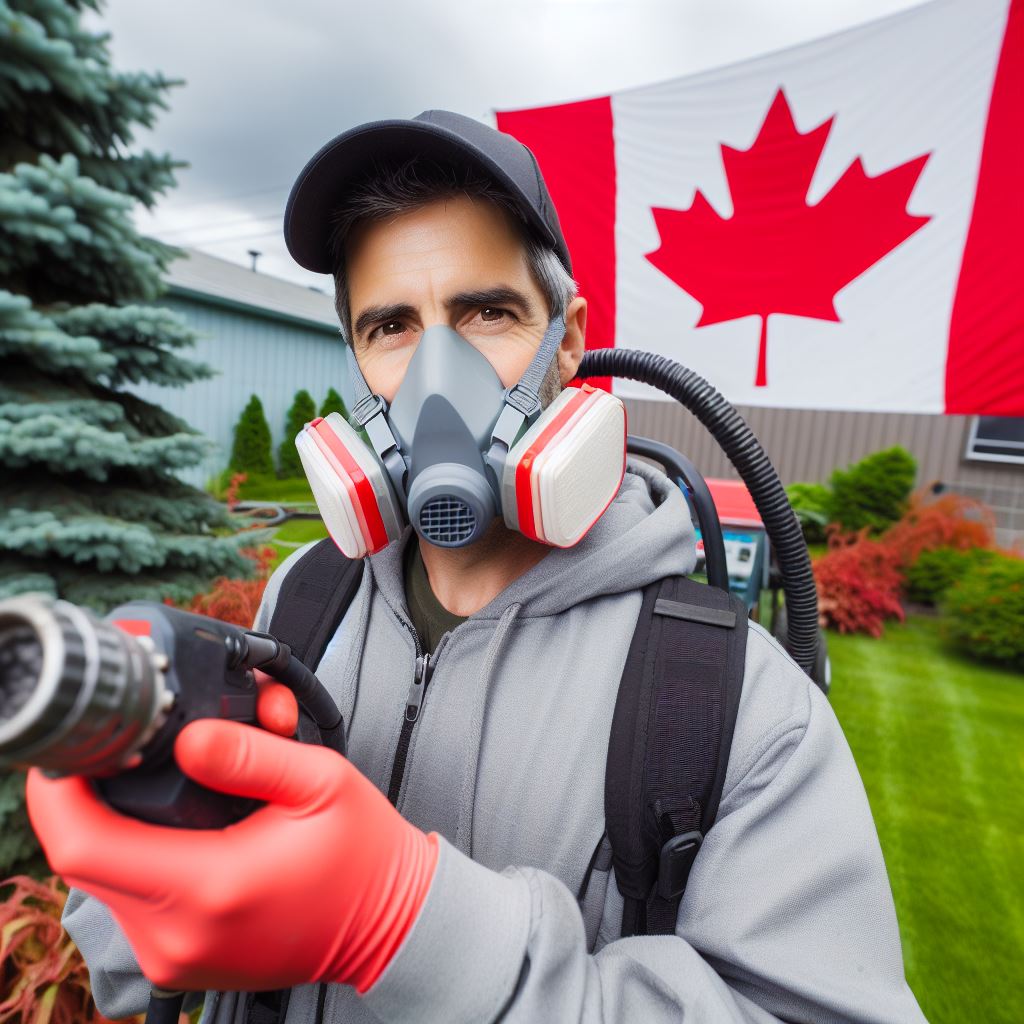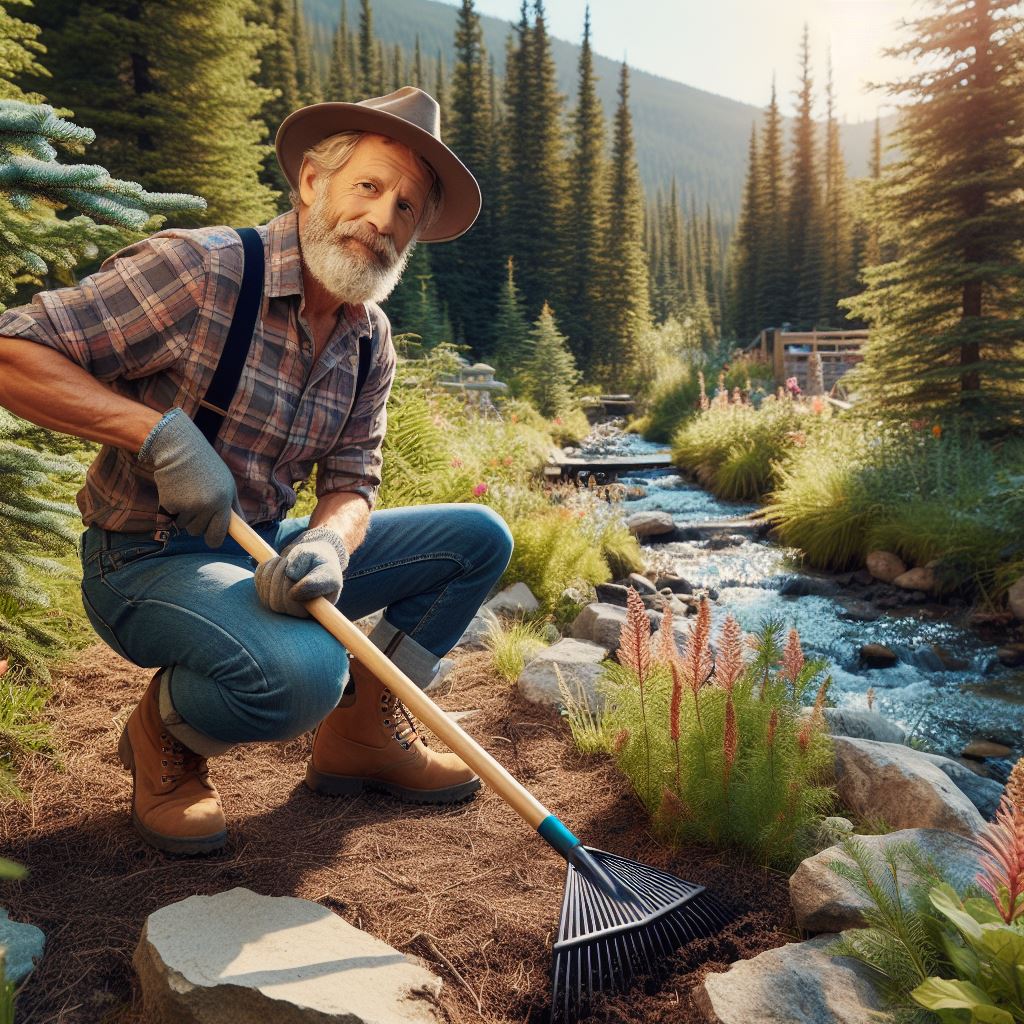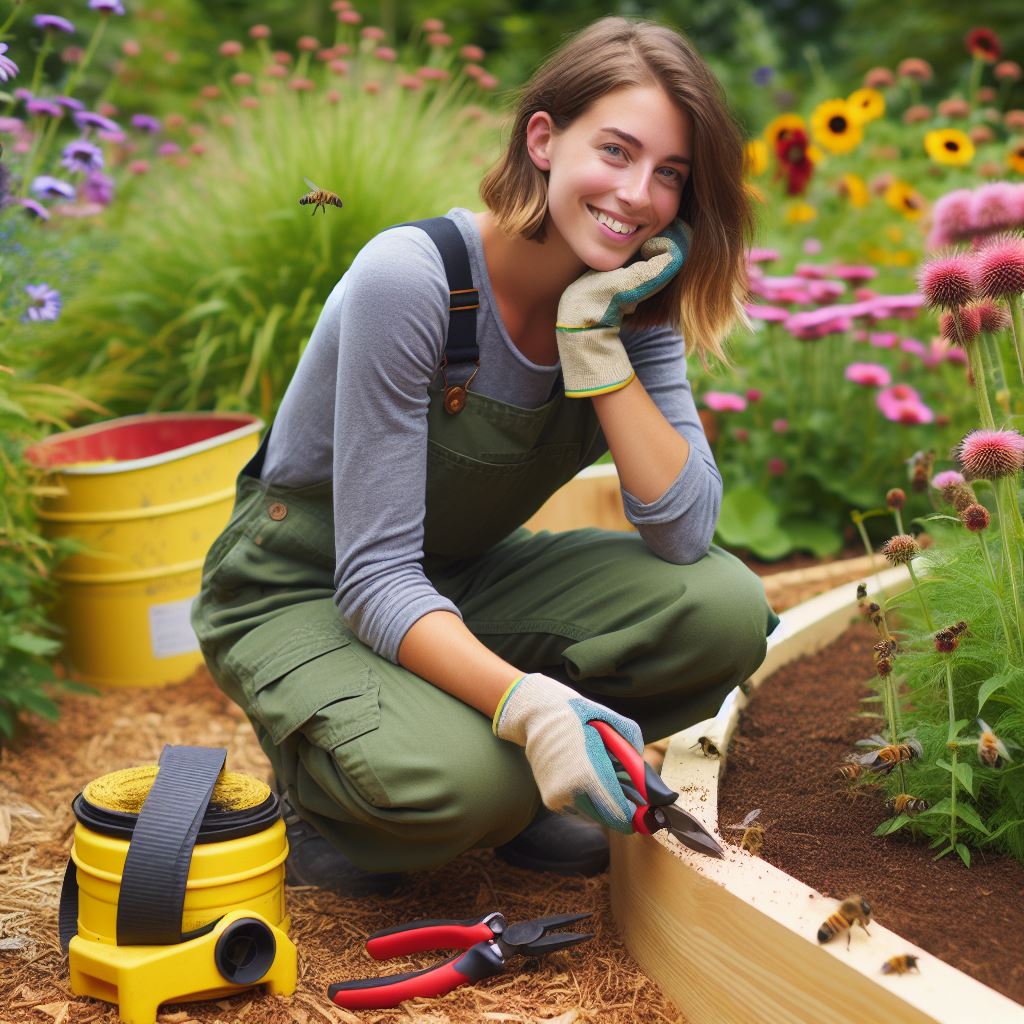Introduction
Landscaping safety is crucial due to the potential hazards involved in this industry.
In Canada, with its unique environmental factors and weather conditions, an emphasis on safety is paramount.
Canadian Landscape Hazards
Extreme weather conditions such as snow, ice, and unpredictable temperature changes pose risks.
Wildlife encounters with animals like bears or moose can threaten the safety of landscapers.
The use of heavy machinery and equipment increases the potential for accidents.
Safety Regulations in Canada
The Canadian Centre for Occupational Health and Safety (CCOHS) provides guidelines for safe landscaping practices.
Government agencies like WorkSafeBC enforce safety standards and provide resources for landscapers.
Mandatory training programs and certifications ensure competency in handling equipment and understanding safety protocols.
Importance of Personal Protective Equipment (PPE)
Wearing proper PPE, including helmets, gloves, and safety boots, is crucial to minimize injuries.
Specialized PPE such as high-visibility clothing and ear protection address specific landscaping hazards.
Regular inspection and replacement of PPE ensure continued effectiveness.
Promoting a Safety Culture
Employers should create a culture of safety by providing comprehensive training and enforcing safety guidelines.
Regular safety meetings and discussions foster awareness and emphasize the importance of safety practices.
Encouraging open communication, reporting near misses, and addressing concerns promptly foster a safer work environment.
Basically, landscaping safety is a top priority in Canada, considering the unique challenges presented by its diverse landscape and climate.
By following safety regulations, using appropriate PPE, and promoting a safety culture, landscapers can mitigate risks and ensure a safe working environment.
Overview of Landscaping Safety in Canada
Statistics and facts related to workplace injuries in the landscaping industry
- Workplace injuries in the Canadian landscaping industry are a significant concern.
- According to statistics, landscaping workers experience a higher injury rate compared to other industries.
- In 2019, there were over 6,500 reported cases of workplace injuries in the landscaping sector.
- The majority of injuries in the industry are caused by slips, trips, falls, and equipment accidents.
- The cost of these injuries not only affects workers but also results in financial burdens for employers.
The need for safety precautions
- Due to the high rate of workplace injuries, it is crucial to prioritize safety in landscaping.
- Implementing safety precautions can significantly reduce the number and severity of accidents.
- Workers should be trained on proper handling of equipment, using personal protective gear, and recognizing hazards.
- Encouraging a culture of safety, including reporting near misses and addressing safety concerns, is essential.
- Employers must provide regular safety training and enforce safety protocols to ensure worker well-being.
Legal regulations and standards relevant to landscaping safety in Canada
- Canada has specific legal regulations in place to promote and enforce landscaping safety.
- Occupational Health and Safety (OHS) Acts outline employer and employee responsibilities.
- Employers must conduct risk assessments, create safety policies, and provide necessary training.
- Employees have the right to refuse unsafe work and report hazards to their employer or regulatory authorities.
- Regulatory bodies, such as WorkSafeBC and the Canadian Centre for Occupational Health and Safety, oversee compliance.
Essentially, ensuring landscaping safety in Canada is of utmost importance due to the alarming statistics on workplace injuries.
Implementing safety precautions, emphasizing proper training, and complying with legal regulations enable a safer work environment for all.
By prioritizing safety, both employers and workers can mitigate risks and create a landscaping industry that values the well-being of its workforce.
Read: How to Survive Winter: Landscaping Edition
Common Hazards in Landscaping
When it comes to landscaping, the safety of workers should always be a top priority.
In Canada, there are several common hazards that those in the landscaping industry should be aware of and take precautions to avoid.
Use of equipment and machinery
A major hazard in landscaping is the use of equipment and machinery.
Various tools, such as lawnmowers, chainsaws, and trimmers, can pose potential risks if not used correctly.
It is crucial for workers to receive proper training on how to operate these tools safely and effectively.
Unlock Your Career Potential
Visualize a clear path to success with our tailored Career Consulting service. Personalized insights in just 1-3 days.
Get StartedAdditionally, regular maintenance of equipment is essential to prevent malfunctions that could result in accidents or injuries.
Exposure to chemicals
Exposure to chemicals is another significant concern in landscaping.
Pesticides, fertilizers, and other chemical substances are often used to maintain and enhance landscapes.
However, these substances can have harmful effects on human health if not handled properly.
Workers should be educated on the potential health risks associated with these chemicals and be trained on safe handling practices.
Wearing protective clothing, such as gloves and masks, is also necessary to minimize direct contact with hazardous substances.
Working at heights
Risks involved in tree trimming, pruning, and other elevated tasks
Working at heights poses its own set of hazards in landscaping.
Tasks like tree trimming, pruning, and installing outdoor lighting often require workers to work at elevated levels.
Falls from heights can result in severe injuries or even fatalities.
To mitigate these risks, it is crucial to use proper safety equipment, such as harnesses and ladders, and ensure they are in good working condition.
Regular inspection of elevated work areas is also necessary to identify and address any potential risks or hazards.
Ensuring the use of appropriate safety equipment
By being aware of these common hazards and taking appropriate safety measures, landscaping professionals can significantly reduce the risk of accidents and injuries on the job.
Regular training sessions, strict adherence to safety protocols, and proper equipment maintenance are all essential elements of ensuring the well-being of workers.
In general, the proper management of common hazards in landscaping is crucial to maintain a safe working environment.
The use of equipment and machinery, exposure to chemicals, and working at heights are all potential risks that workers in the industry should be aware of.
By implementing necessary safety measures and training programs, landscaping professionals can protect themselves and their colleagues from accidents and injuries.
Ultimately, prioritizing safety ensures a successful and sustainable landscaping industry in Canada.
Read: Urban Landscaping Challenges in Canada

Best Practices for Landscaping Safety
Landscaping can be a dangerous profession, but it doesn’t have to be.
By following best practices for safety, you can reduce the risk of accidents and injuries on the job.
Job site assessment and planning
Job site assessment and planning is crucial to identifying potential hazards and developing strategies to mitigate them.
This includes assessing the terrain, weather conditions, and equipment needed for the job.
Communication and team coordination are also essential to ensure everyone is on the same page and working together towards a common goal.
Personal protective equipment (PPE)
Personal protective equipment (PPE) is another important aspect of landscaping safety.
Different types of PPE are recommended for various landscaping tasks, such as gloves, safety glasses, and hard hats.
It’s important to train workers on the proper use and maintenance of PPE to ensure they are effective in protecting against hazards.
Proper ergonomics
Proper ergonomics is key to preventing strains, sprains, and musculoskeletal injuries.
Techniques such as proper lifting, bending, and stretching can help reduce the risk of injury.
Encouraging regular breaks and stretching exercises can also help prevent fatigue and improve overall health.
Safety training and education
Safety training and education is crucial to ensuring ongoing safety for landscapers.
It’s important to provide regular training on safety procedures and best practices, as well as resources and organizations that offer relevant courses.
This can help keep workers up-to-date on the latest safety standards and techniques.
By following these best practices for landscaping safety, you can help ensure a safe and healthy work environment for everyone involved.
Remember, safety should always be a top priority on the job site.
Read: Navigating Landscaping Regulations in Canada
Discover More: Navigating Construction Unions in Canada
Case Studies or Personal Experiences
Real-life examples of workplace accidents or incidents, if available
- In one landscaping company, an employee suffered a severe back injury due to improper lifting techniques.
- Another incident involved a worker who was struck by a falling tree branch, resulting in a head injury.
- A landscaping crew experienced a chemical spill due to careless handling, causing respiratory issues for the workers.
- One employee was electrocuted while operating machinery near power lines, leading to serious burns.
- These accidents highlight the need for strict adherence to safety protocols and proper training in the landscaping industry.
Personal stories or testimonials highlighting the importance of landscaping safety
- John, a landscaper, shared his story of tripping and falling on uneven ground, resulting in a fractured wrist.
- Sarah, another landscaper, emphasized the importance of wearing protective gear after a close call with flying debris.
- These personal stories serve as reminders that safety precautions can prevent life-altering accidents.
- Testimonials from landscaping professionals further underscore the significance of prioritizing safety in daily operations.
- Their experiences showcase the potential risks involved in landscaping work and the need for proper safety measures.
Successful implementation of safety measures leading to positive outcomes
- ABC Landscaping implemented a comprehensive safety training program, reducing workplace accidents by 45% in one year.
- XYZ Landscapers enforced a “buddy system,” preventing injuries by ensuring every employee has a partner for hazardous tasks.
- By conducting regular safety audits, LMN Gardens identified potential risk areas and implemented preventive measures, resulting in zero accidents for five consecutive years.
- Sunshine Landscapes invested in ergonomic tools and equipment, reducing strain and injuries among their employees.
- These success stories demonstrate that proactive safety measures yield positive outcomes and foster a safer work environment.
In a nutshell, case studies, personal experiences, and success stories play a vital role in emphasizing the importance of landscaping safety.
Real-life incidents serve as cautionary tales, urging individuals to prioritize safety practices.
Personal stories and testimonials from professionals in the field underline the potential risks involved and the need for protective measures.
Furthermore, successful implementation of safety protocols leads to positive outcomes, reducing the occurrence of accidents and creating a safer work environment.
By learning from these examples, the landscaping industry can strive towards a culture of safety and well-being for all its workers.
Read: Landscaping for Beginners: A Canadian Guide
Conclusion
Recap of the significance of landscaping safety in Canada
In this blog post, we explored the importance of landscaping safety from a Canadian perspective.
We discussed how the landscaping industry can be risky without proper safety measures in place.
We highlighted the various hazards that landscapers may face, including falls, equipment accidents, and exposure to harmful substances.
We also emphasized the potential consequences of ignoring safety precautions, such as injuries, legal liabilities, and damage to reputation.
Encouragement to prioritize safety in the industry
It is crucial for landscaping companies and professionals to prioritize safety at all times.
By implementing safety protocols and providing proper training, employers can ensure a safer working environment for their employees.
Workers should also prioritize their own safety by wearing appropriate personal protective equipment, following safety guidelines, and reporting any hazards or incidents they come across.
Final thoughts and call to action
As the landscaping industry continues to grow in Canada, it becomes increasingly important to prioritize safety.
Every stakeholder in the industry, from employers to workers, must take responsibility for ensuring a safe working environment.
By establishing a culture of safety and providing ongoing training and education, we can work towards reducing accidents and injuries in the landscaping industry.
Let us join hands and make safety a top priority in Canadian landscaping, protecting not only the well-being of workers but also the reputation and sustainability of the industry as a whole.
Together, we can create a safer and more rewarding future for everyone involved in the landscaping profession.




